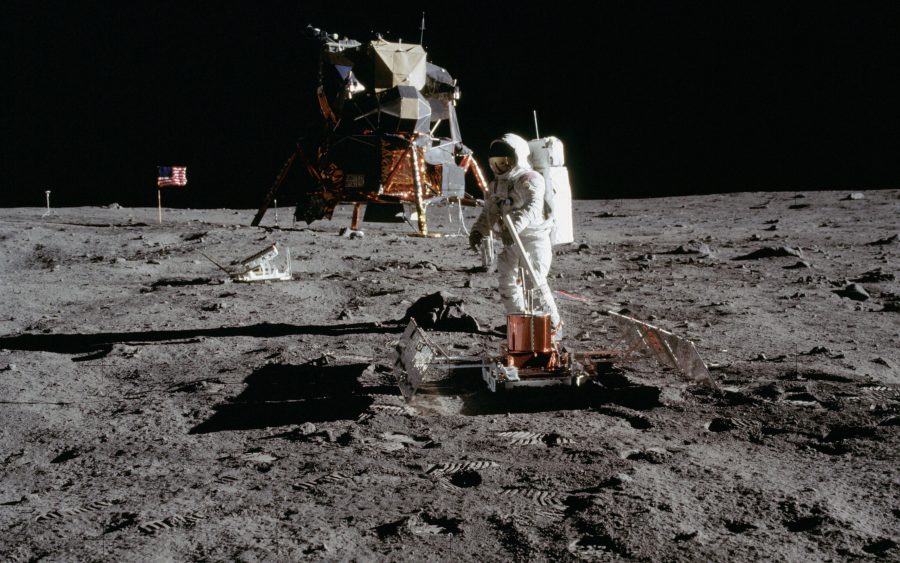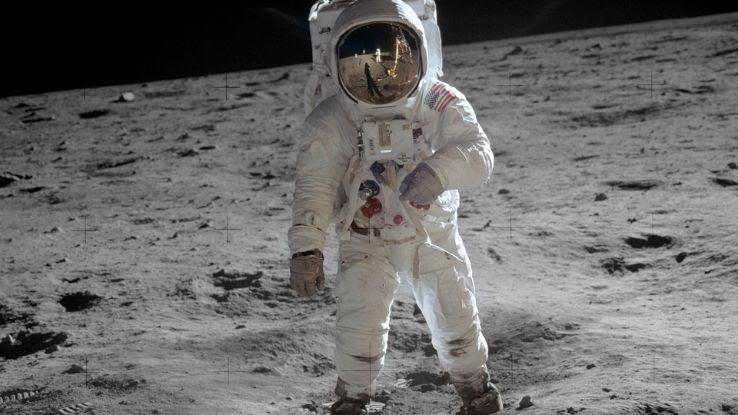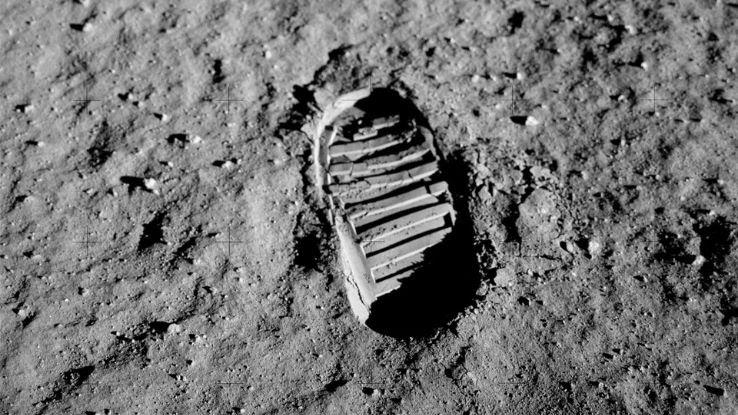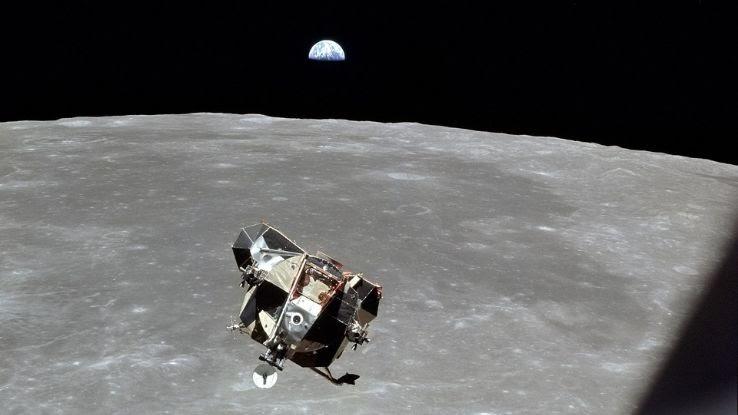Fact Check: Why Do People Think the Moon Landing Was a Hoax?

On July 20th, 1969, humankind made history by landing on the surface of Earth’s moon. While the moon landing was watched by 650 million viewers, not everyone was convinced it actually happened.
Even to this day, some folks believe it to be an elaborate hoax. In our latest Fact Check, we’re taking a look at some of these conspiracy theories. Houston, let’s see if we have a problem.
1969 Moon Landing: What We Know
There are several things that we know for certain about the moon landing because they’ve been well documented. For example, we know that take-off started at 9:32 a.m. EDT on July 16th, with astronauts Neil Armstrong, Buzz Aldrin, and Michael Collins ready to make history. And, 76 hours later, these astronauts landed on the moon transmitting the now-iconic, “The Eagle has landed” message. The mission was filmed with a television camera, which was attached to the lunar module.

As Neil Armstrong stepped down the ladder, hundreds of millions of people held their breath at home. And, when his foot touched down on the moon’s surface, he rejoiced, saying, “That’s one small step for a man, one giant leap for mankind.” Armstrong was joined by Aldrin and together they planted an American flag on the moon’s surface, documented the terrain, and took a call with then-President Richard Nixon. Collins stayed behind in the command module.
The astronauts spent the equivalent of an Earth night on the moon before heading back to the command module. Before leaving, they also placed a plaque, which reads, “Here men from the planet Earth first set foot upon the Moon July 1969, A.D. We came in peace for all mankind.” In total, this mission cost NASA $25 billion, which, by today’s standards, would amount to around $156 billion.
Of course, this wasn’t the last time astronauts touched down on the moon. Overall, there would be five planned lunar landing missions. As of 2022, the last person to have walk on the moon is Eugene Cernan. He did so in December 1972 as part of the Apollo 17 mission.
1969 Moon Landing: The Controversy
However, not everyone believed what they saw on TV, so much so that some were convinced the landing was filmed on a Hollywood backlot. Let’s take a look at some of the most common questions skeptics have — and how NASA has responded to them.

1. Question: How is it possible that the flag was moving? One of the most common pieces of “evidence” against the moon landing that skeptics cite is that the flag astronauts planted on the moon appears to move — which wouldn’t be possible in the windless vacuum of space.
- The Rebuttal: NASA’s former chief historian, Roger Launius, explained that the astronauts used a right-angled rod, but they were worried it would fall down. They ended up twisting it into the ground and accidentally bending it in the process and taking their photos quickly after. According to Launius, the movement simply came from the twisting motion.
2. Question: Where were the stars? If you’ve seen the moon landing photos, you’ve probably wondered the same thing. For some, the absence of stars suggests that the photos weren’t taken in space by NASA astronauts.
- The Rebuttal: Rick Fienberg, the press officer for the American Astronomical Society, debunked this theory, explaining that astronauts used short “daytime exposures.” This means that the camera exposure was too short to capture the stars. Similarly, it also couldn’t capture the astronauts’ space suits. “Show me a photo of a night football game under lights below an open sky, and point to any visible stars,” says spaceflight historian and analyst James Oberg.
3. Question: Why are the angles of the shadows so inconsistent? When you dig deeper into the theories, you’ll stumble upon this one. According to skeptics, the shadow angles are totally inconsistent throughout the footage and this shouldn’t happen if the sun was the only light source. For conspiracy theorists, the inconsistency of the shadows points to the use of studio lighting.
- The Rebuttal: According to experts, “uneven surface topography explains many of these cases” — i.e. shadows that don’t run parallel — while others are a matter of perspective, “the geometrical effect that makes parallel lines appear to converge on a distant vanishing point.” Okay, so how is Aldrin so brightly illuminated in that one photo where he’s standing in the shadow of the Lunar Module? The lunar surface reflects light — we’ve all seen a glowing full moon, right? — so the glow of the terrain surrounding Aldrin, and his reflective white spacesuit, create the effect.
4. Question: What about the dust? Many skeptics take issue with the actual surface of the moon, citing that the footprints are too well-preserved and/or that there should’ve been a dust cloud present when the Lunar Module landed.
- The Rebuttal: Actually, the Lunar Module did kick up quite a bit of dust before its touchdown, something Aldrin has spoken about at length. Moreover, experts note that “There’s also no blast crater because, in a vacuum, the normally narrow exhaust jet from a rocket engine quickly fans out into a wide cone shape. This causes the pressure in the exhaust to drop, greatly reducing its impact on the ground below.” As for the well-preserved footprints, it’s important to note that lunar dust isn’t like sand. In fact, it’s ground-up rock, and much more like volcanic ash.
5. Question: What about the photos? The Apollo 11 mission often includes photos of both astronauts on the moon, securing the flag in place, but skeptics want to know who took their picture?
- The Rebuttal: The primary camera was actually installed on the Lunar Module, while a second camera was carried by Armstrong. Altogether, the cameras have taken around 18,000 photos of the mission. But because the quality was so poor, NASA was forced to choose the best possible ones. Or, better yet, the only ones that were decent enough to be relevant.
Other Little-Known Tidbits About Moon Landing
Unfortunately, conspiracy theories about the moon landing have gotten a lot of attention, so much so that they’ve overshadowed the actual, interesting facts surrounding the landmark event.

Here’s a quick rundown of some of the more interesting moon-landing tidbits:
- The first meal eaten on the moon? Bacon, sugar cookies, fruit, and coffee. A solid choice, right? Aldrin also treated himself to some wine.
- On its return, the mission almost crash landed, but made it back safely with just 45 seconds of fuel to spare.
- Allegedly, Aldrin should’ve been the first to walk the moon — not Armstrong — but, in the end, NASA chose Armstrong instead.
- Collins stayed in the command module, which, apparently, he preferred because it afforded him some peace and quiet.





